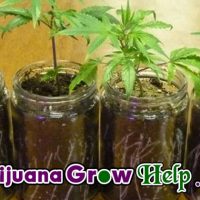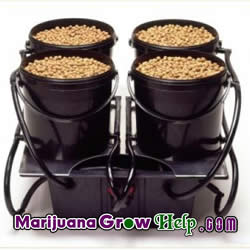How Soil And Nutrients Impact Marijuana Growth

Understand Effect on Marijuana Growth
When you begin growing marijuana for the first time, the number of growing options that are available to you can seem a bit overwhelming. From rock wool and hydroponic grow tables to aeroponics and good old fashioned dirt in buckets; there are numerous methods available to root your bud, and then a whole new world of fertilizer to choose from. Making the right choices early on can have a very positive impact on marijuana growth throughout the life-cycle.
For novices and first-time growers, sticking to a soil-based growing medium is probably the best idea. Organic aficionados generally grow in the dirt too, using organic fertilizers like rotted horse manure or worm castings. Using soil and organic fertilizers can be more forgiving to the new grower, as well, although cannabis is a wonderfully resilient plant in general. Marijuana growth varies a little between hydroponics, aeroponics, and soil – however, we’ll cover that later. Right now, we will focus on how the soil and nutrients can affect marijuana growth.

Marijuana growth is impacted by the types of nutrients it receives from the soil or other growing medium.
When you’re growing in soil, remember that marijuana loves to grow in fairly loose soil with good drainage and room for the roots to breathe. If the soil is packed too tightly around the roots or there isn’t enough space in the pot, you can stress the root bundle which leads to less marijuana growth overall. If you ensure that your plants have good drainage, and you don’t overwater them, then you can avoid most instances of root rot or other fungal infections. When you’re growing in soil, you’ll also need to re-pot your plant as it grows larger, so be prepared.
Marijuana Growth and Hydroponics
Some growers prefer to grow hydroponically, especially in the case of large-scale production growers who intend to supply dispensaries or a community of patients. When growers use hydroponic setups, rock wool cubes are usually used for rooting the plants. Growing marijuana hydroponically requires some skill and experience, and it’s also more expensive to set up, so hydroponic growing isn’t recommended for beginners. If you get to a stage where you want to work with clones from a mother plant, rock wool cubes can also be a great asset for rooting new cuttings. Rock wool retains moisture very well, which is essential when you’re rooting new cuttings. But because rock wool retains moisture well, you can also run the risk of developing mold with them, so keep a close eye on your grow site.

Marijuana growth in a hydroponic system differs from growth in soil, as does the way the plant receive nutrients.
Whatever the growing medium you choose, however your plants will need nutrients. The nutrients that marijuana needs include a blend of macronutrients and micro-nutrients. Whether you choose an organic fertilizer like worm castings or horse manure, or you choose a chemical fertilizer, the primary nutrients that marijuana needs are Nitrogen, Phosphorous and Potassium, commonly abbreviated N-P-K.
These nutrients are absolutely essential for marijuana growth, allowing your plants to build strong stalks and stems, bushy leaves and ultimately their dense, resinous buds.
Chemical fertilizers usually focus on N-P-K blends with small amounts of trace nutrients, but your plants will need additional nutrients such as Calcium (Ca), Manganese (Mg), Sulfur (S), Magnesium (Mg), Iron (Fe), Boron (Bo), Copper (Cu) and Zinc (Zn) if you want them to be their healthiest.
Without proper nutrients, your plants will struggle or produce poorly, resulting in low yields and/or low potency. Compared to the N-P-K focused chemical fertilizers, organic alternatives like manure are also an attractive option because of the wide range of nutrients they include. Chemical fertilizers are more likely to cause what is called nutrient burn, as well, whereas organic fertilizers generally release nutrients more gradually, mitigating the risk of nutrient burn.




No comments yet.